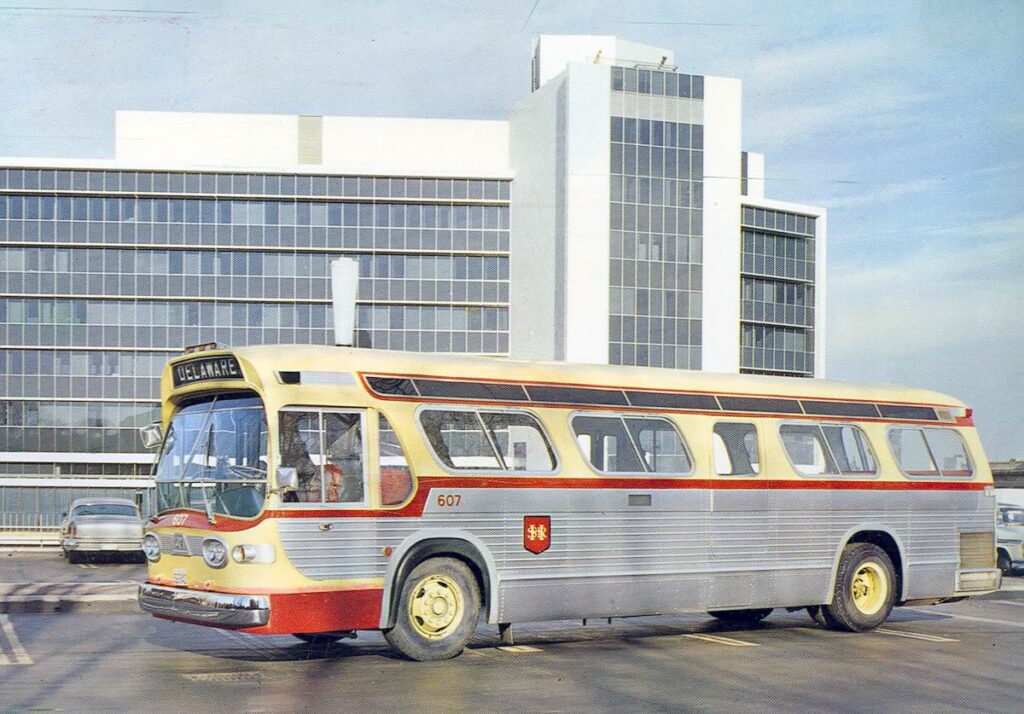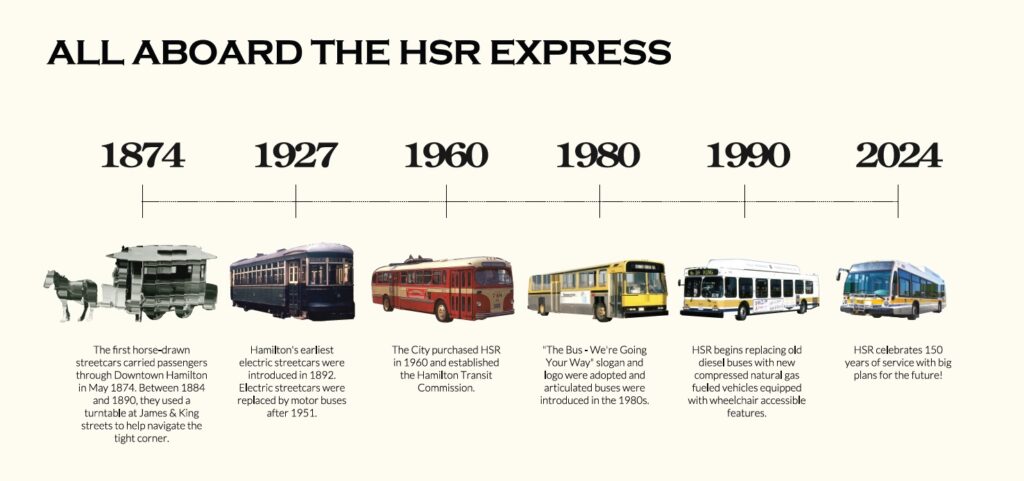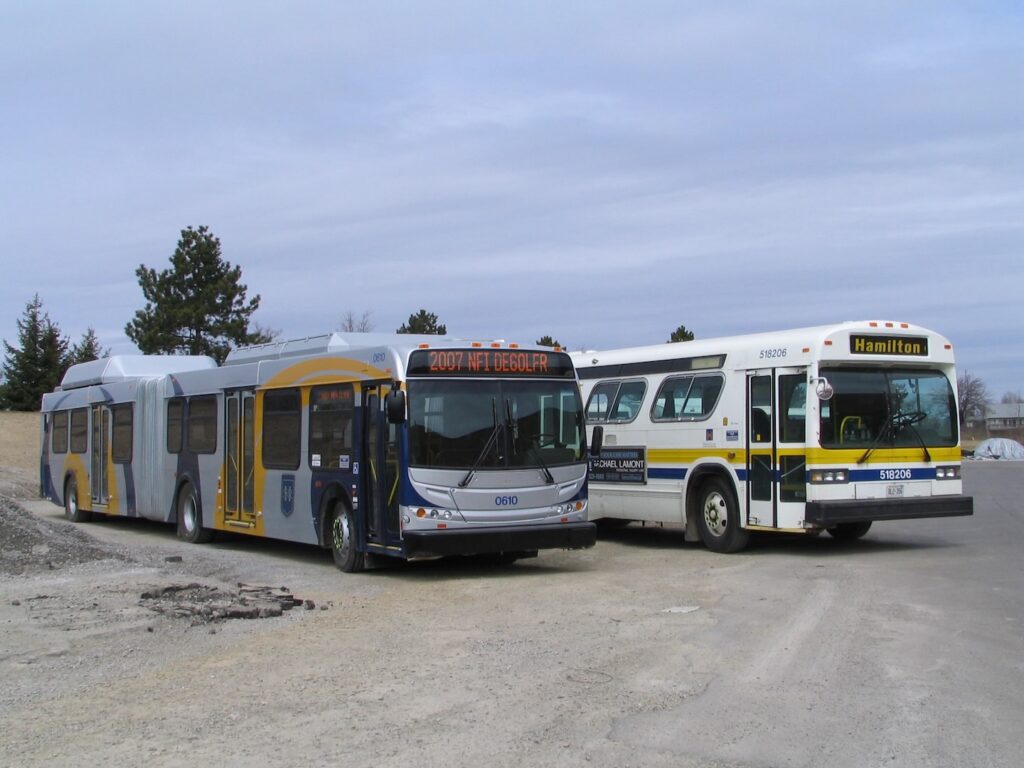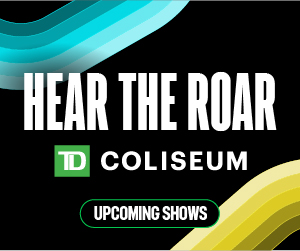150 years of the HSR

Hamilton’s transit agency began to roll in 1874 with six streetcars, 22 horses and three-quarter miles of track. It now oversees a fleet of 308 buses carrying an average of 55,000 people each day.
It’s pretty incredible to reflect that as we undertake to build an electrified light-rail transit line running on a dedicated line through the lower city that the Hamilton Street Railway started out with horse-drawn streetcars.
Those 150 years of history are on display with Take a Ride with HSR: Celebrating 150 Years of Connections. It’s an exhibit created by Tourism Hamilton in partnership with HSR staff.
Of course, the name Hamilton Street Railway is in itself a nod to history, referencing a time when public transit in Hamilton was primarily served by street cars that ran on rail. Since 1951, the HSR has been a rubber-on-road operation.

The HSR has been “a lifeline in our city” and “the backbone of our community,” says Mayor Andrea Horwath. It is one of the longest-running transit agencies in Canada.
The exhibit explores HSR’s legacy, highlighting artifacts and photographs for the first time. It includes a display of a historic HSR trolley bus.
The exhibit is free and will remain on display at the Tourism Hamilton visitor centre at 28 James St. N. until Dec. 21. The centre is open Tuesdays through Saturdays, from 10 a.m. to 4 p.m.
The HSR launched service in May 1874 with six streetcars, 22 horses and three-quarter miles of track. Those earliest vehicles seated 14 passengers. Today, HSR has 308 buses in its fleet, serving 243 square kilometres on 35 routes. The agency employes more than 1,000 people who are responsible for the transportation of an average of 21 million riders each year.
That adds up to about 55,000 riders a day. That’s roughly double what the entire population of Hamilton was when the HSR was founded.

The HSR has been an innovator, pioneering the use of compressed natural gas (CNG) in North America when it converted its first diesel buses in 1985. Since then, the CNG-powered bus fleet has expanded, with nearly 90 per cent of buses expected to run on CNG by the end of 2024.
HSR is currently working on its (re)Designed Network, which aims to optimize the customer experience and modernize the transit network to align with the benefits of the future LRT.
To celebrate its birthday, the HSR is asking the public to share their stories, memories and photos of the transit service (engage.hamilton.ca/hsr150). It’s also offering $1.50 fares on all buses on select dates through 2024. Subscribe to Bus News and follow the HSR’s socials to find out when.

FAST FACTS
- Beginning in 1892, electricity was used to power the vehicles. This new technology made the service much faster and cars now zoomed along at a furious 15 mph
- Some streetcars had closed-in sides, but others were open-sided, making them popular for summertime outings
- Up until 1899, the HSR was owned by individual shareholders. With the coming of electrification, the interests of power companies expanded considerably. Hamilton Cataract Power, Dominion Power & Transmission, and later the Hydro-Electric Power Commission of Ontario were successive owners of the HSR until after World War II.
- Beginning in August 1926, buses ran on the Balmoral/Main route, with Cannon following the following year.
- A group, which included Francis Farwell, owner of Canada Coach Lines, assumed ownership of the HSR in 1946. Within a few months, it was announced that streetcars would be phased out in five years in favour of buses.
- On April 6, 1951, thousands of onlookers jammed Gore Park to witness ceremonies when the old streetcar made its symbolic final run.
- In 1960, the City of Hamilton purchased the HSR and Canada Coach Lines from Farwell, and the Hamilton Transit Commission was established to operate the organization.
- In 1977, the company came under the jurisdiction of the Regional Municipality of Hamilton-Wentworth, now the City of Hamilton.
- The B Line, HSR’s first express bus route, took off in September 1986. The east-west route stopped only eight times between McMaster University and Eastgate Square, cutting travel time across the city in half.

BY THE NUMBERS
- There were 15.2 million revenue riders recorded in 2022 (most recent year with data available).
- For comparison, there were 21.6 million revenue riders in 2019, prior to COVID.
- In February 2024, ridership returned to pre-COVID levels for the first month since the pandemic began in March 2020.
- The HSR provided 17.4 million total vehicle kilometres of service in 2022.
- The HSR provides 960,000 annual service hours (basically a vehicle being on the street with a driver behind the wheel).
- The HSR fleet includes 308 vehicles, which includes 11 small buses, 49 articulated buses and 2 replica trolley buses. Of the total, 252 are powered by CNG (compressed natural gas).
- To serve afternoon peak demand, 241 vehicles are required.
- The HSR has 35 fixed routes, including two express routes (A Line and B Line). Twenty-two of 35 routes have frequencies of 15 minutes or less during the weekday peak periods.













